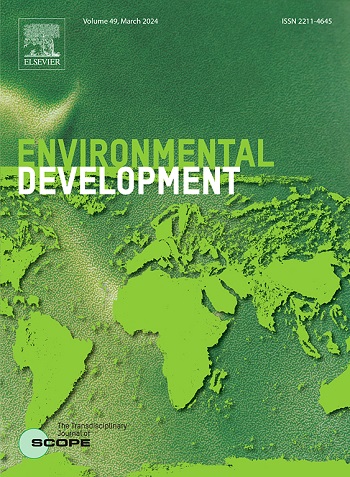Optimal to excessive: Pragmatic use of chemical and biological products and crucial determinants in carp aquaculture in the Northeastern Himalayas
IF 5.3
2区 环境科学与生态学
Q2 ENVIRONMENTAL SCIENCES
引用次数: 0
Abstract
This study employs statistical techniques to examine the variables that affect the utilisation of chemical and biological inputs in carp aquaculture in the Gomati River basin of Tripura, India. Two hundred carp farmers were surveyed in seven blocks and three districts, utilising a semi-structured interview schedule to obtain data. The data was analysed using both inferential and descriptive statistical approaches, which include a multiple-stepwise logistic forward regression model. The survey recorded 23 distinct chemical and biological substances used by farmers frequently, indicating a widespread dependence on water and soil treatment chemicals as well as disinfectants. The results suggest that the size of the pond, the total production of the pond, the gender of the farmer, the experience in fish farming, and the number of crops per year have a significant impact on the use of inputs (p < 0.05). Significantly, the analysis revealed no notable variation in disease prevalence or perceived ecological consequences among the districts. This study offers a statistically rigorous framework for comprehending the present patterns of input utilisation in carp aquaculture in the region. The discovered influencing factors provide useful insights for policymakers and stakeholders promoting sustainable aquaculture practices. These insights can be used to develop customised input suggestions and training initiatives tailored to farmers' demographics and production systems.
从最佳到过度:化学和生物产品的实际使用以及东北喜马拉雅地区鲤鱼养殖的关键决定因素
本研究采用统计技术检查影响印度特里普拉邦戈马蒂河流域鲤鱼养殖中化学和生物投入利用的变量。在七个街区和三个地区对200名鲤鱼养殖户进行了调查,利用半结构化访谈时间表获取数据。使用推理和描述性统计方法对数据进行分析,其中包括多步逻辑正向回归模型。调查记录了农民经常使用的23种不同的化学和生物物质,表明对水和土壤处理化学品以及消毒剂的广泛依赖。结果表明,池塘的大小、池塘的总产量、养殖户的性别、养鱼经验和每年的作物数量对投入品的使用有显著影响(p <;0.05)。值得注意的是,分析显示各区之间在疾病患病率或感知到的生态后果方面没有显著差异。这项研究为了解该地区鲤鱼养殖投入物利用的现状提供了一个严格的统计框架。发现的影响因素为促进可持续水产养殖做法的决策者和利益相关者提供了有用的见解。这些见解可用于根据农民的人口统计和生产系统制定定制的投入建议和培训计划。
本文章由计算机程序翻译,如有差异,请以英文原文为准。
求助全文
约1分钟内获得全文
求助全文
来源期刊

Environmental Development
Social Sciences-Geography, Planning and Development
CiteScore
8.40
自引率
1.90%
发文量
62
审稿时长
74 days
期刊介绍:
Environmental Development provides a future oriented, pro-active, authoritative source of information and learning for researchers, postgraduate students, policymakers, and managers, and bridges the gap between fundamental research and the application in management and policy practices. It stimulates the exchange and coupling of traditional scientific knowledge on the environment, with the experiential knowledge among decision makers and other stakeholders and also connects natural sciences and social and behavioral sciences. Environmental Development includes and promotes scientific work from the non-western world, and also strengthens the collaboration between the developed and developing world. Further it links environmental research to broader issues of economic and social-cultural developments, and is intended to shorten the delays between research and publication, while ensuring thorough peer review. Environmental Development also creates a forum for transnational communication, discussion and global action.
Environmental Development is open to a broad range of disciplines and authors. The journal welcomes, in particular, contributions from a younger generation of researchers, and papers expanding the frontiers of environmental sciences, pointing at new directions and innovative answers.
All submissions to Environmental Development are reviewed using the general criteria of quality, originality, precision, importance of topic and insights, clarity of exposition, which are in keeping with the journal''s aims and scope.
 求助内容:
求助内容: 应助结果提醒方式:
应助结果提醒方式:


